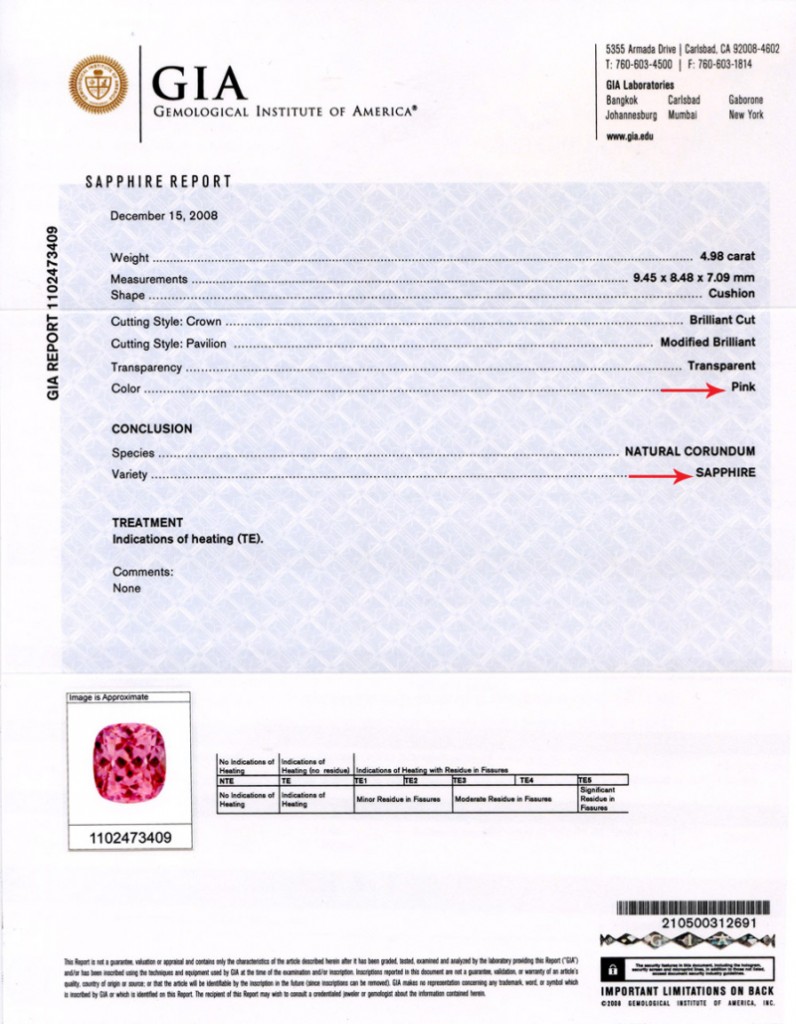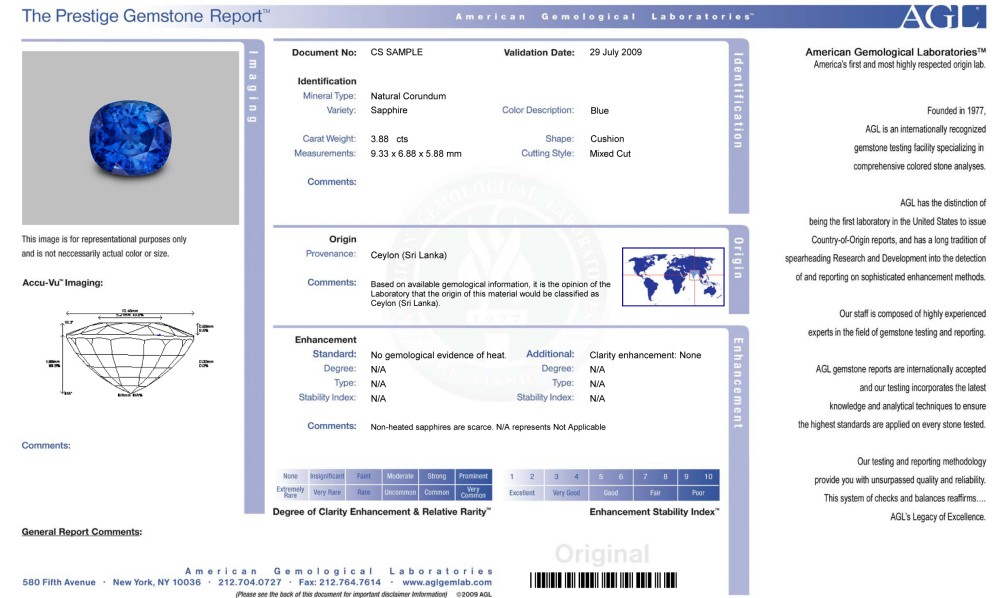Gemstone Information
All stones are natural and carefully selected for color, cut, clarity and cost. Color Symphony does not work with man-made, synthetic, simulated or lab created material. The majority of all colored stones are enhanced through heat. Heat enhancement does not change the qualification of a stone as natural, per leading authorities in the industry including the American Gem Trade Association (AGTA)and the Gemological Institute of America (GIA).
Color Symphony carries both heat and untreated stones and discloses ALL gem treatments to clients. All white diamonds are natural and never treated or enhanced in any way. Colored diamonds are natural and are either untreated or color enhanced.
AGTA Gemstone Enhancement Codes (Below)
| N = Not Enhanced | HP = Heat & Pressure |
| SC = Special Care | I = Impregnating |
| ASBL = Assembled | CMP = Composite |
| B = Bleaching | L = Lasering |
| C = Coating | O = Oiling/Resin |
| D = Dyeing | R = Irradiation |
| F = Filling | U = Diffusion |
| H = Heating | W = Waxing/Oiling in |
| Opaque Stones |
There is no universal clarity/color grading standard for colored gemstones. They can be graded in a similar way to diamonds with some significant differences. Color, clarity, cut, and weight are the main value factors. The difference is that these factors are evaluated and weighted differently than in diamonds. In colored stones, color is the main consideration (most dealers assess the color component of a stone at between 50% to 70% of its value).
Unlike with diamonds, a minor clarity difference rarely affects the price of colored stones, and in some cases a stone can be valued more with a lesser clarity grade. A sapphire for example with a rich “velvety” type color is preferred over one that has a diamond like transparency even if that means the stone might contain minor rutile internally.
Below you can find the GIA clarity charts for colored stones. One thing you might notice, there is no flawless rating for colored stones, the argument is that by looking with high powered magnification, you can always find a spot, crystal growth, included crystal, or something if you look hard enough, since they are natural stones.
GIA Type 1 Clarity Chart |
|
| VVS | Very Very Slightly Included – Minute to not detectable |
| VS | Very Slightly Included – minor |
| SI1 | Slightly Included – NOTICEABLE to obvious |
| SI2 | Slightly Included 2 – OBVIOUS to noticeable |
| I1 | Included 1 – Prominent – moderate effect on appearance or durability |
| I2 | Included 2 – Prominent – severe effect on appearance & durability |
| I3 | Included 3 – Prominent – severe effect on beauty, transparency & durability |
| Type 1 Gemstones are gemstones that are normally found to be clean. This includes gems such as Amethyst, Aquamarine, Blue Topaz, Citrine, Kunzite, Tanzanite, Yellow Beryl, Yellow Chrysoberyl and Diamond. | |
GIA Type 2 Clarity Chart |
|
| VVS | Very Very Slightly Included – Minor inclusions |
| VS | Very Slightly Included – NOTICEABLE to Obvious |
| SI1 | Slightly Included – Noticeable to OBVIOUS |
| SI2 | Slightly Included 2 – Obvious to Prominent |
| I1 | Included 1 – Prominent – moderate effect on appearance or durability |
| I2 | Included 2 – Prominent – severe effect on appearance & durability |
| I3 | Included 3 – Prominent – severe effect on beauty, transparency & durability |
| Type 2 Colored Gemstones by their nature have natural inclusions. (Inclusions are the norm) This includes gems such as Andalusite, Crysoberyl, Alexandrite, Corundum (i.e. Sapphire and Ruby), Garnet, Peridot, Quartz, Amethyst, Citrine, Ametrine, Spinel, Tourmaline and Zircon. | |
|
GIA Type 3 Clarity Chart |
|
| VVS | Very Very Slightly Included – NOTICEABLE to obvious |
| VS | Very Slightly Included – Noticeable to OBVIOUS |
| SI1 | Slightly Included – OBVIOUS to prominent |
| SI2 | Slightly Included 2 – Obvious to PROMINENT |
| I1 | Included 1 – Prominent – considerable effect on appearance or durability |
| I2 | Included 2 – Prominent – severe effect on transparency or durability |
| I3 | Included 3 – Prominent – severe effect on beauty, transparency & durability |
Type 3 Colored Gemstones by their nature have many natural inclusions. (Heavily Included is the norm) This includes gems such as Emerald, Beryl, Rubellite, and Tourmaline. A rather nice guide for buying gemstones can be found online on the G.I.A. website, Click on this link to read How to Buy a Gemstone |
|
There are a number of gemological laboratories world-wide that offer colored gemstone and jewelry analysis and reporting. Since shipping internationally may pose additional risks we have listed our top two choices for labs in the US and they include GIA and AGL. Their laboratory services include diamond and/or colored gemstone identification, origin and treatment or enhancement disclosure. A sample report from each is provided for reference in the information that follows.
The GIA (Gemological Institute of America) has two locations nationally, one in N.Y.C and another in Carlsbad, and has an additional 14 international locations. This is the most commonly used laboratory for diamonds in the USA but it also provides full gemological services for colored gemstones. The GIA is world renowned for its state of the art laboratories and staff. http://www.gia.edu/

The AGL (American Gemological Laboratory) is located in NYC, NY. AGL was a pioneer in the colored gemstone industry as the first gemological laboratory in the USA to issue country-of-origin reports. AGL has extensive experience in consumer protection programs. The Laboratory is equipped with state-of-the-art instrumentation, and applies standard gemological, as well as advanced analytical, techniques to each high quality determination it makes. http://www.aglgemlab.com

